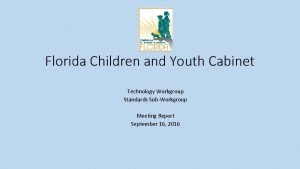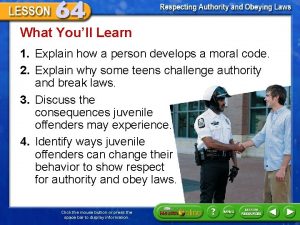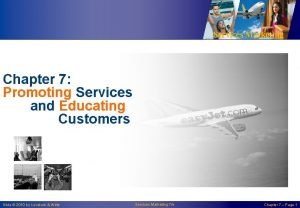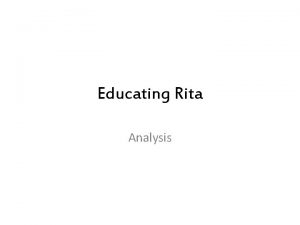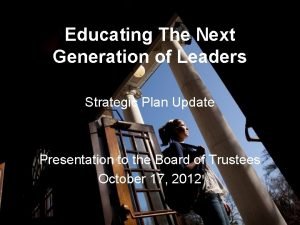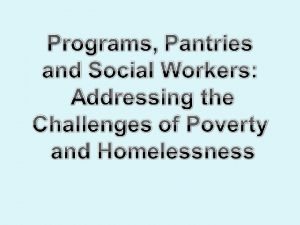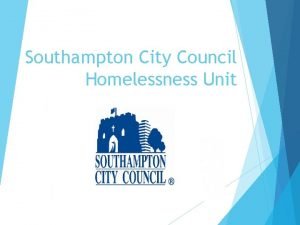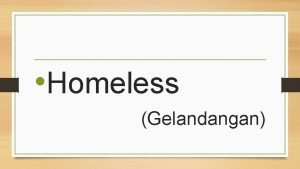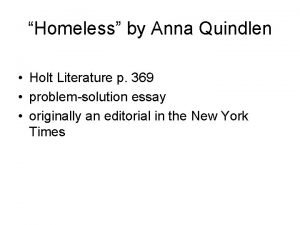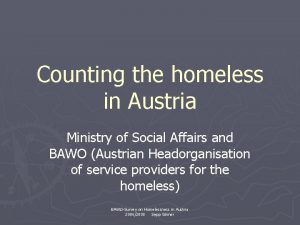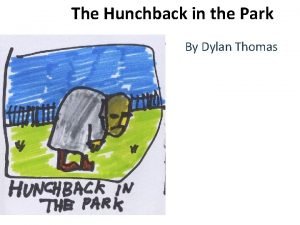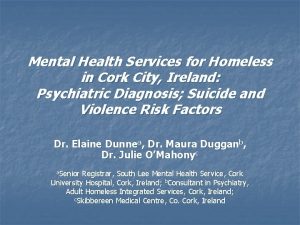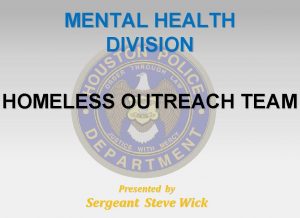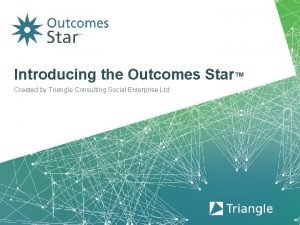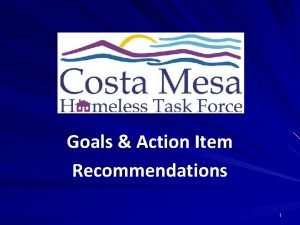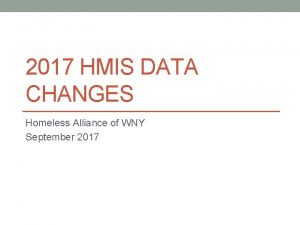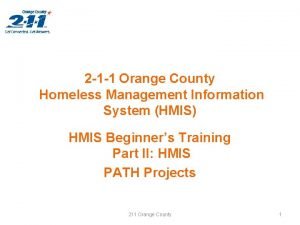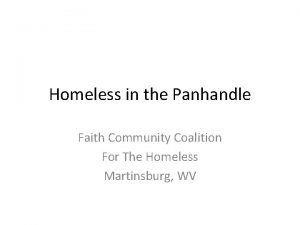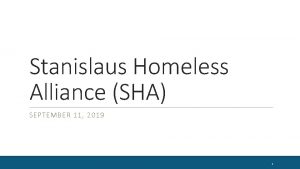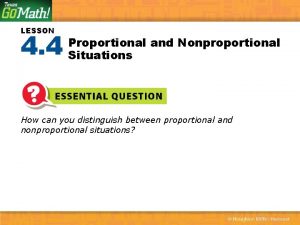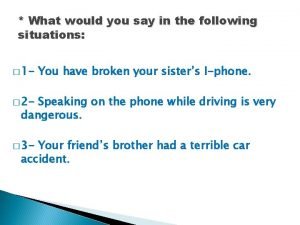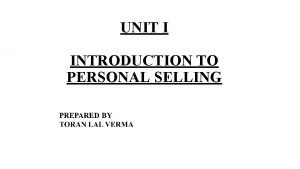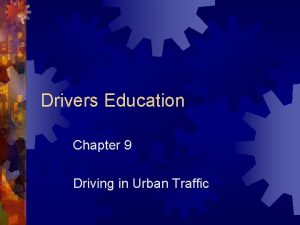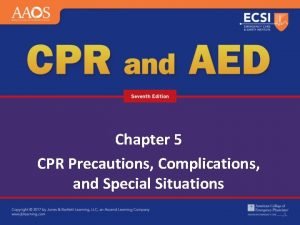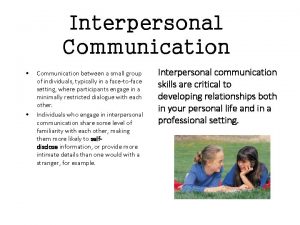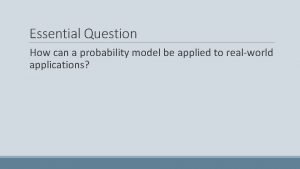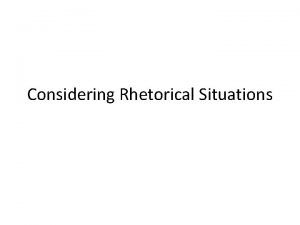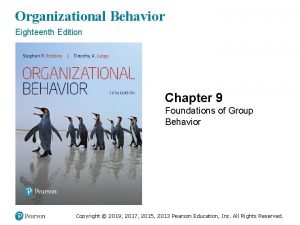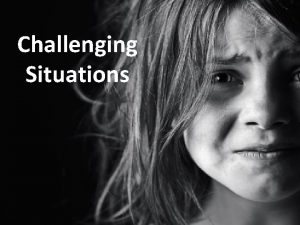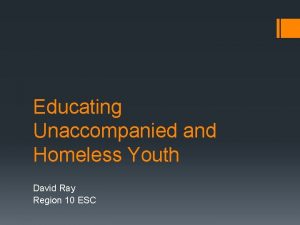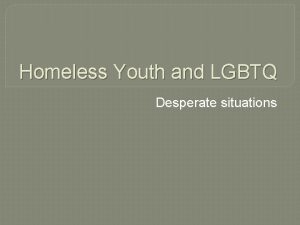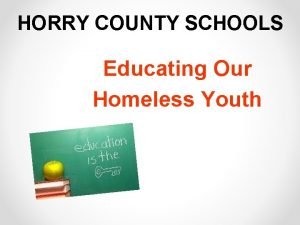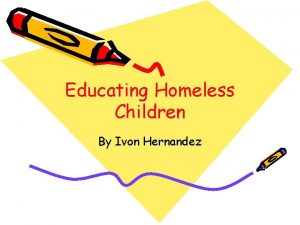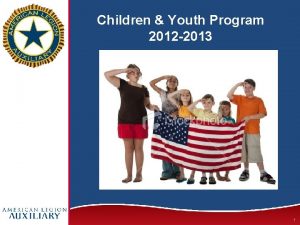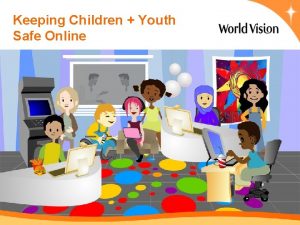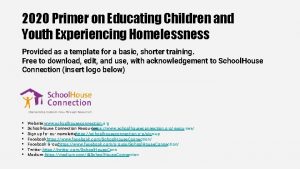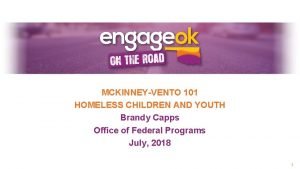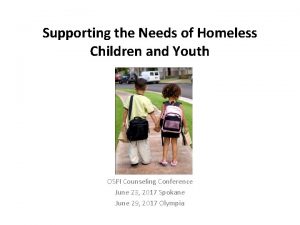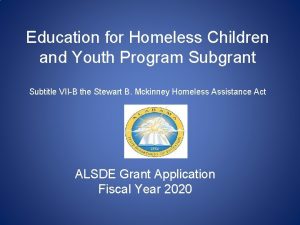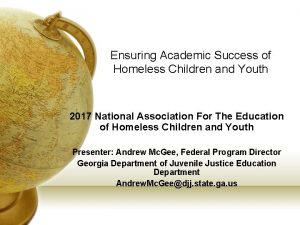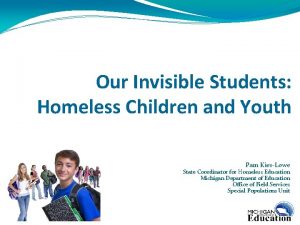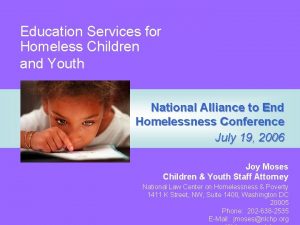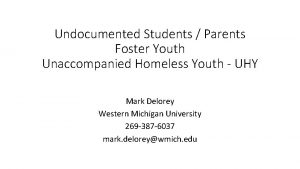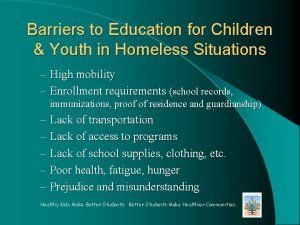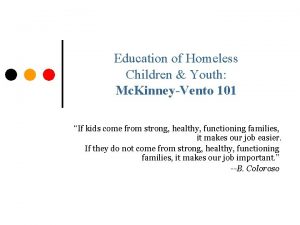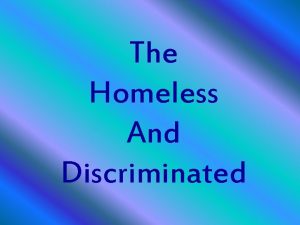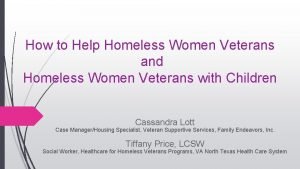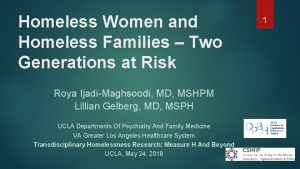Educating Children and Youth in Homeless Situations Laws































































- Slides: 63

Educating Children and Youth in Homeless Situations: Laws, Policies, and How They Work in Real Life State College, PA November 19, 2012 1

Causes of Homelessness Lack of affordable housing Foreclosures Poverty Economic recession Unemployment Health problems Lack of health insurance Addiction disorders, Mental health Domestic violence Natural and other disasters Abuse/neglect/family dysfunction (unaccompanied youth) 2

How many children and youth experience homelessness? 10% of all children living in poverty over the course of a year. Public schools identified 1, 065, 794 homeless students; a 57% increase since 2007 53% of all children in HUD-funded shelters are under the age of 6. 3

Barriers to Education for Homeless Children and Youth Lack of awareness; under-identification High mobility resulting in lack of school stability and educational continuity Poor health, fatigue, hunger Prejudice and misunderstanding Enrollment requirements (school records, health records, proof of residence and guardianship) Lack of transportation Lack of school supplies, clothing, etc. 4

Mc. Kinney-Vento Homeless Assistance Act Reauthorized 2002 by NCLB Main themes: Identification School stability School access Support for academic success Child-centered, best interest decision making 5

Local Homeless Education Liaisons Every LEA must designate a liaison for students in homeless situations. Responsibilities Ensure that children and youth in homeless situations are identified. Ensure that homeless students enroll in and have full and equal opportunity to succeed in school. Link with educational services, including preschool and health services. Resolve disputes and assist with transportation. 6

Eligibility—Who is Covered? Children who lack a fixed, regular, and adequate nighttime residence— Sharing the housing of others due to loss of housing, economic hardship, or similar reason [72% of identified homeless students in 20102011] Living in motels, hotels, trailer parks, camping grounds due to lack of adequate alternative accommodations [Motels: 5% of identified homeless students in 2010 -11] 7

Eligibility— Who is Covered? Children who lack a fixed, regular, and adequate nighttime residence— Living in emergency or transitional shelters [18% of identified homeless students in 2010 -11] Living in a public or private place not designed for humans to live Living in cars, parks, abandoned buildings, substandard housing, bus or train stations, or similar settings Migratory children living in above circumstances Awaiting foster care placement 8

Determining Eligibility Case-by-case determination Get as much information as possible (with sensitivity and discretion) Look at the MV definition (specific examples in the definition first, then overall definition) Shared housing considerations: Where would you go if you couldn’t stay here? What led you to move in to this situation? NCHE’s Determining Eligibility brief is available at http: //www. serve. org/nche/downloads/briefs/det_elig. pdf 9

Identification Strategies Avoid using the word "homeless” with school personnel, families, or youth. Provide awareness activities for school staff (registrars, secretaries, counselors, nurses, teachers, tutors, bus drivers, security officers, drop out prevention specialists, administrators, etc. ). http: //www. naehcy. org/training. html http: //center. serve. org/nche/web/online_tr. php Coordinate with community service agencies, such as shelters, soup kitchens, public assistance and housing agencies, and public health departments. 10

Identification Strategies (cont. ) Post outreach materials and posters in all schools and where there is a frequent influx of low-income families and youth in high-risk situations, including motels, campgrounds, libraries, youth centers. http: //www. k 12. wa. us/Homeless. Ed/ Use enrollment and withdrawal forms to inquire about living situations. www. utdanacenter. org/theo/downloads/factsheets/R P 14_SRQ. doc 11

Identification Strategies (cont. ) Make special efforts to identify preschool children, including asking about the siblings of school-aged children. Develop relationships with truancy officials and/or other attendance officers. Enlist youth to spread the word. “MV-FAFSA Week”: naehcy. org/tk/tk. html Make sure data entry and database managers know how to enter, maintain and report information. 12

Research on School Stability Demonstration project in WA showed that school stability for homeless students increases assessment scores and grades. Mobility also hurts non-mobile students; study found average test scores for non-mobile students were significantly lower in high schools with high student mobility rates. Students who changed high schools even once during high school were less than half as likely as stable students to graduate, even controlling for other factors. 13

Research on School Stability (cont. ) Study published in the Archives of Psychiatry found that youth aged 11 to 17 were twice as likely to attempt suicide if their families moved three or more times compared to those who had never moved. Victoria, TX adopted a “One Child, One School, One Year” policy. ADA increased $1. 6 million. TAKS scores increased significantly. 14

School Stability— Key Provisions Students can stay in their school of origin for the duration of homeless and until the end of the school year when they find permanent housing, as long as that is in their best interest. School of origin—school attended when permanently housed or in which last enrolled. Best interest—keep homeless students in their schools of origin, to the extent “feasible”, unless this is against the parents’ or guardians’ wishes. Can always also choose the local school (any school others living in the same area are eligible to attend). 15

Feasibility— USED Criteria A child-centered, individualized determination Continuity of instruction Age of the child or youth Safety of the child or youth Likely length of stay in temporary housing Likely area where family will find permanent housing Student’s need for special instructional programs Impact of commute on education School placement of siblings Time remaining in the school year 16

Transportation—Key Provisions 1. LEAs must provide transportation to and from their school of origin, at a parent’s or guardian’s request (or at the liaison’s request for unaccompanied youth). If crossing LEA lines, they must determine how to divide the responsibility and share the cost, or they must share the cost equally. 17

Transportation—Key Provisions 2. LEAs also must provide students in homeless situations with transportation services comparable to those provided to other students. 3. LEAs must eliminate barriers to the school enrollment and retention of students experiencing homelessness (including transportation barriers). 18

Transportation Strategies Develop close ties among local liaisons, school staff, pupil transportation staff, and shelter workers. Use school buses (including special education, magnet school and other buses). Develop formal or informal agreements with school districts where homeless children cross district lines. Use public transit where feasible. Use approved carpools, van or taxi services. Reimburse parents and youth for gas. Pursue inter-agency solutions 19

School Stability Resources School of origin vs. Local school: http: //center. serve. org/nche/downloads/briefs/sch _sel_checklist. pdf Transportation: http: //center. serve. org/nche/pr/incr_sch_stab. php www. utdanacenter. org/theo/downloads/factsheets/ RP 33 b_Transportation_Rural. pdf 20

School Enrollment— Key Provisions If remaining in the school of origin is not feasible, children and youth in homeless situations are entitled to immediate enrollment in any public school that students living in the same attendance area are eligible to attend. The terms “enroll” and “enrollment” include attending classes and participating fully in school activities. 21

Enrollment— Key Provisions (cont. ) Enrollment must be immediate, even if students do not have required documents, such as school records, health records, proof of residency or guardianship, or other documents. If a student does not have immunizations, or immunization or medical records, the liaison must immediately assist in obtaining them, and the student must be enrolled in the interim. 22

Enrollment— Key Provisions (cont. ) Enrolling schools must obtain school records from the previous school, and students must be enrolled in school while records are obtained. Schools must maintain records for students who are homeless so they are available quickly. SEAs and LEAs must develop, review, and revise policies to remove barriers to the enrollment and retention of children and youth in homeless situations. 23

Immediate Enrollment— Strategies Request all records from the previous school immediately, including immunization records. Parental signature is not required for transfer students (FERPA). The vast majority of students have been enrolled in school before and have received immunizations. Speak with parents and youth about the classes the student was in, previous coursework and special needs. Call the counselor, teachers or principal at the previous school for information. Ensure enrollment staff on every campus are aware of the law and procedures. 24

Unaccompanied Youth-Who Are They? Definition: child or youth who meets the definition of homeless and is not in the physical custody of a parent or guardian. Some youth become homeless with their families, but end up on their own due to lack of space in temporary accommodations or shelter policies that prohibit adolescent boys. 60% of homeless mothers live apart from at least one of their minor children; 35% live apart from all their children. 93% of homeless fathers live apart from all their children. 25

Who Are They? (cont. ) Studies have found that 20 to 50 percent of unaccompanied youth were sexually abused in their homes, while 40 to 60 percent were physically abused. Over two-thirds of callers to Runaway Hotline report that at least one of their parents abuses drugs or alcohol. Over half of youth living in shelters report that their parents either told them to leave, or knew they were leaving and did not care. 26

Who Are They? (cont. ) 20 -40% of homeless youth identify as gay, lesbian, bisexual, or transgender (compared to 3 -5% of the overall population). 25 -40% of youth who emancipate from foster care will end up homeless. Many youth have been thrown out of their homes due to pregnancy. 48% of street youth have been pregnant or impregnated someone. 10% of currently homeless female teens are pregnant. 27

Unaccompanied Youth— Key Provisions Immediate enrollment applies, even without parent or guardian. Youth self-enrollment Caregiver form Liaisons must help unaccompanied youth choose and enroll in a school, after considering the youth’s wishes, and inform the youth of his or her appeal rights. School personnel must be made aware of the specific needs of runaway and homeless youth. 28

Parental disapproval / school liability Liability: based on the concept of negligence, or a failure to exercise reasonable care. Following federal law and providing appropriate services are evidence of reasonable care. Violating federal law and denying services are evidence of negligence. Be reasonable based on the circumstances Talk with the youth 29

Contacting police and child welfare MV requires eliminating barriers to enrollment and retention in school. Arrest, custody and foster care threats and barriers to unaccompanied youth. Schools must enroll youth immediately. School is the safest and best place for youth. Educators are mandated to report suspected abuse and/or neglect (homelessness alone is not abuse/neglect) to child welfare. Build relationships with law enforcement, juvenile justice and local child welfare. 30

Unaccompanied Youth—Strategies Develop clear policies for enrolling unaccompanied youth immediately, whether youth enroll themselves, liaisons do enrollment, caretakers enroll youth in their care, or another procedure is in place. Train local liaisons and all school enrollment staff, secretaries, counselors, principals, school security staff, attendance officers, and teachers on the definition, rights, and needs of unaccompanied youth. Coordinate with youth-serving agencies, such as shelters, soup kitchens, drop-in centers, street outreach, child welfare, juvenile courts, law enforcement, legal aid, teen parent programs, public assistance, gay/lesbian/bisexual/transgender youth organizations, mental health agencies… 31

Unaccompanied Youth—Strategies (cont. ) Offer youth an adult and peer mentor. Establish systems to monitor youth’s attendance and performance, and let youth know you’ll be checking up on them. Help youth participate fully in school (clubs, sports, homework help, etc. ) Build trust! Be patient, and ensure discretion and confidentiality when working with youth. 32

School Enrollment Resources Immediate enrollment without documents: http: //center. serve. org/nche/downloads/briefs/ass essment. pdf Immediate enrollment without parent/guardian: http: //center. serve. org/nche/downloads/briefs/gua rdianship. pdf Immediate enrollment without immunizations: http: //www. naehcy. org/dl/elders_memo. pdf 33

School Enrollment Resources (cont. ) Full participation in school activities: http: //center. serve. org/nche/downloads/briefs/extr a_curr. pdf Ensuring credit accrual and recovery: http: //center. serve. org/nche/downloads/briefs/cre dit. pdf 34

Resolution of Disputes— Key Provisions Every state must establish procedures. When a dispute over enrollment arises, the student must be admitted immediately to the school of choice while the dispute is being resolved. The parent or guardian must be provided with a written explanation of the school’s decision, including the right to appeal. The school must refer the child, youth, parent, or guardian to the liaison to carry out the dispute resolution process as expeditiously as possible. 35

Impacts of Homelessness on Young Children Higher rates of developmental delays: Infants who are homeless start life needing special care four times more often than other babies. Homeless toddlers show significantly slower development than other children Higher rates of chronic and acute health problems. Higher exposure to domestic and other types of violence. 36

Head Start Findings Compared to non-homeless children served by Head Start (1999 HS demonstration programs), homeless children have: Greater developmental delays (language) More learning disabilities More health and mental health problems Higher frequency of withdrawal, shyness, separation anxiety, short attention disorder, flat affect, aggression, hoarding, anxiety in response to changes in environment or staff absences, concern over getting enough food, and sharing toys 37

Mc. Kinney-Vento Preschool Provisions Liaisons must ensure that families and children have access to Head Start, Even Start, and other public preschool programs administered by the LEA. State Mc. Kinney-Vento plans must describe procedures that ensure that homeless children have access to public preschool programs. 38

Head Start is a federally-funded comprehensive service delivery program for low-income/at-risk families and children with disabilities Head Start provides services to children and families in the following areas: Health and Nutrition (including Mental Health and Dental Services) Education Family Support Disabilities

Head Start Provisions Homeless children are categorically eligible for Head Start programs are required to identify and prioritize homeless children for enrollment; allow homeless children to enroll while required paperwork is obtained; and coordinate with LEA liaisons. OHS Information: http: //eclkc. ohs. acf. hhs. gov 40

Strategies for Accessing Early Childhood Services Identify the existing early childhood programs within your district: classrooms for birth to 5 year olds; preschool special education programs; other federally funded projects and community/district collaborations. Connect with key public early childhood and elementary school staff to build relationships, share data, and create awareness of the impact of homelessness on young children to work toward future partnerships. Advocate for slots for homeless children within those existing preschool programs. 41

Strategies for Accessing Early Childhood Services (cont. ) Include homelessness in the list of criteria for priority enrollment, classify homelessness as an “at risk” factor, and/or include homelessness specifically as a criterion for "most in need. ” Designate a “homeless contact” at each Head Start and preschool program in your community; make sure each contact is trained and hold regular meetings. Designate a “young child” contact at each homeless service program; ensure that this contact is knowledgeable about Head Start, preschool, child development, etc. Explore funding support from Title I, Part A, and grants sources such as United Way. 42

Title I and Homelessness A child or youth who is homeless is automatically eligible for Title IA services, regardless of whether his or her school is a Title IA school. LEAs must reserve (or set aside) the funds necessary to serve homeless children who do not attend Title IA schools, including educationally related support services. Funds may be used for children attending any school in the LEA. 43

Strategies for Determining the Title IA Set-Aside Amount Review needs and costs involved in serving homeless students in the current year and project for the following year. Multiply the number of homeless students by the Title IA per pupil allocation. For districts with subgrants, reserve an amount greater than or equal to the Mc. Kinney-Vento subgrant funding request. Reserve a percentage based on the district’s poverty level or total Title IA allocation. 44

USED Guidance on Using Title IA Funds for Homeless Students Title I funds may be used for services not ordinarily provided to other Title I students. Services must be reasonable and necessary to enable homeless students to take advantage of educational opportunities. Funds must be used as a last resort when services are not reasonably available from another public or private source. An individual paid in whole or in part with Title IA funds may also serve as a homeless liaison. 45

USED Guidance (cont. ) Examples of Uses of Title IA funds: Items of clothing, particularly if necessary to meet a school’s dress or uniform requirement Clothing and shoes necessary to participate in physical education classes Student fees that are necessary to participate in the general education program Personal school supplies such as backpacks and notebooks Birth certificates necessary to enroll in school Immunizations Food 46

USED Guidance (cont. ) Uses of Title IA funds (cont. ): Medical and dental services Eyeglasses and hearing aids Counseling services Outreach services Extended learning time Tutoring services Parental involvement Fees for AP and IB testing Fees for SAT/ACT testing GED testing for school-age students 47

Title I Part A Resources http: //center. serve. org/nche/downloads/b riefs/titlei. pdf http: //www. ed. gov/policy/gen/leg/recover y/guidance/titlei-reform. pdf 48

Can college application fees be waived? Yes, at the discretion of each individual college. If she gets her SAT fee waived, she can receive up to 4 “Request for Waiver of College Admission Fee” forms. Do not guarantee waiver, but may facilitate http: //sat. collegeboard. org/register/sat-feewaivers http: //www. act. org/aap/pdf/feewaiver. pdf 49

How can the Liaison help facilitate college application fee waivers? Provide student a letter on district letterhead explaining the Mc. Kinney-Vento Act, the student’s eligibility, and his or her situation. This information can be shared without parental consent, under the financial aid exception to FERPA. Establish relationships with Admissions Officers and Financial Aid Administrators (FAAs) at local colleges and universities. 50

Unaccompanied Youth and Higher Education: The FAFSA Youth who meet the definition of “independent student” can complete the FAFSA without parental income information or signature. Unaccompanied youth are automatically considered independent students. Must be verified as unaccompanied and homeless during the school year in which the application is submitted. Youth who are unaccompanied, at risk of homelessness, and self-supporting are also automatically considered independent students. Must be verified as such during the school year in which the application is submitted. 51

FAFSA (cont. ) Verification must be made by: a Mc. Kinney-Vento Act school district liaison, a HUD homeless assistance program director or their designee, a Runaway and Homeless Youth Act program director or their designee, or a financial aid administrator. Youth who have been in foster care at any time after age 13 are also automatically independent. More information and sample letters are available at: http: //www. naehcy. org/higher_ed. html 52

Helping with food Homeless students are automatically eligible for free school meals. USDA policy permits liaisons and shelter directors to obtain free school meals for students immediately by providing a list of names of students experiencing homelessness with effective dates. http: //www. naehcy. org/guidance. html http: //center. serve. org/nche/downloads/briefs/nutr ition. pdf 53

Can unaccompanied homeless youth apply for SNAP (food stamps) on their own? Yes. There is no age minimum for food benefits; No parent signature is required; and food benefits cannot be denied due to lack of address or photo ID. Eligibility is based on the “household”. If the student purchases his or her own food and prepares her own meals, then the student is his or her own household. 54

Can an unaccompanied youth apply for SNAP as part of one of the families where the youth is staying? If the youth and the family purchase and prepare food together, the youth can be added to their household application. Its important for the youth and the family(s) to talk about food stamps and how the youth’s application could affect the household. 55

What information would help a youth decide how to apply for SNAP? Does the student purchase and prepare food alone or as part of a family? How often does the student stay with the family? Is the family already receiving SNAP? Considering the student’s income and the size of the family, how would the student’s participation affect their benefit? Does the student move enough that the student should apply on his or her own? 56

What are some housing ideas for unaccompanied homeless youth? Stabilize one of the student’s host families Stabilize the student’s employment Offer school credit for work Can school get the student a bus pass to help with transportation? Get the student on SNAP Housing programs for foster youth Was the student ever in care? Does the student have an open case with child welfare? Can child welfare or other programs for current/former foster youth be convinced to provide services? 57

What are some housing ideas for unaccompanied youth (cont. ) Transitional housing programs for youth Rent an apartment College dorms Request a dorm that stays open year-round Apply to be resident advisor / dorm monitor College work-study Housing + High School = Success www. naehcy. org/housingyouth 58

General Resources National Association for the Education of Homeless Children and Youth http: //www. naehcy. org National Center on Homeless Education http: //www. serve. org/nche National Network for Youth http: //www. nn 4 youth. org DVDs for awareness-raising http: //www. hearus. us “The Mc. Kinney-Vento Act in Our Schools”: pjulianelle@naehcy. org “Real Students, Real Schools”: naehcy. org/videos 59

Unaccompanied Youth Resources http: //naehcy. org/tk/tk. html http: //naehcy. org/higher_ed. html http: //naehcy. org/letendre_ab. html http: //center. serve. org/nche/ibt/sc_youth. php http: //www. 1800 runaway. org/ http: //www. youtube. com/user/itgetsbetterproject http: //www. thetrevorproject. org/ 60

Unaccompanied Youth Statistics Toro, P. , Dworsky, A. and Fowler, P. (2007). “Homeless Youth in the United States: Recent Research Findings and Intervention Approaches. ” Toward Understanding Homelessness: The 2007 National Symposium on Homelessness Research. Benoit-Bryan, J. (2011). The Runaway Youth Longitudinal Study. The National Gay and Lesbian Task Force and the National Coalition for the Homeless (2007). Lesbian, gay, bisexual and transgender youth: An epidemic of homelessness. Hammer, H. , Finkelhor, D. , & Sedlak, A. (2002). “Runaway / Thrownaway Children: National Estimates and Characteristics. ” National Incidence Studies of Missing, Abducted, Runaway, and Thrownaway Children. Greene, J. (1995). “Youth with Runaway, Throwaway, and Homeless Experiences: Prevalence, Drug Use, and Other At-Risk Behaviors. ” Research Triangle Institute. 61

Young Children Resources http: //www. naehcy. org/early. html http: //www. horizonsforhomelesschildren. org http: //www. familyhomelessness. org 62

Contact Information Barbara Duffield, Policy Director NAEHCY Phone: 202. 364. 7392 Email: bduffield@naehcy. org Patricia Julianelle, Legal Director NAEHCY Phone: 202. 436. 9087 Email: pjulianelle@naehcy. org 63
 Educating the mind without educating the heart source
Educating the mind without educating the heart source Florida children and youth cabinet
Florida children and youth cabinet Why do some youth challenge authority and break laws
Why do some youth challenge authority and break laws Promoting services and educating customers
Promoting services and educating customers Promoting services and educating customers
Promoting services and educating customers Charles de secondat
Charles de secondat Educating rita analysis
Educating rita analysis Educating for careers
Educating for careers Educating the next generation of leaders
Educating the next generation of leaders Educating for eternity
Educating for eternity Educating rita context
Educating rita context Was will smith homeless
Was will smith homeless Southampton city council homeless
Southampton city council homeless Homeless to harvard summary
Homeless to harvard summary Homeless artinya
Homeless artinya Homeless by anna quindlen
Homeless by anna quindlen Homelessness in austria
Homelessness in austria The hunchback in the park by dylan thomas
The hunchback in the park by dylan thomas Homeless shelters southend
Homeless shelters southend Homeless services cork
Homeless services cork Hpd homeless outreach team
Hpd homeless outreach team Outcome stars triangle
Outcome stars triangle Costa mesa homeless
Costa mesa homeless Alameda county health care for the homeless
Alameda county health care for the homeless Homeless alliance of wny
Homeless alliance of wny Chronically homeless orange county
Chronically homeless orange county Thomas benjamin kennington homeless
Thomas benjamin kennington homeless Homeless coalition martinsburg wv
Homeless coalition martinsburg wv Stanislaus homeless alliance
Stanislaus homeless alliance How to dress homeless
How to dress homeless Michael oher homeless
Michael oher homeless Lesson 4-4 proportional and nonproportional situations
Lesson 4-4 proportional and nonproportional situations 5-1 writing linear equations from situations and graphs
5-1 writing linear equations from situations and graphs 4.4 proportional and nonproportional situations answer key
4.4 proportional and nonproportional situations answer key 5-1 writing linear equations from situations and graphs
5-1 writing linear equations from situations and graphs Lie present continuous tense
Lie present continuous tense Asking for and giving recommendations
Asking for and giving recommendations What can you say about the following ?
What can you say about the following ? What do they have in common? explain.
What do they have in common? explain. Introduction of personal selling
Introduction of personal selling To do in the present
To do in the present Comic situations examples
Comic situations examples L'excipit du dernier jour d'un condamné
L'excipit du dernier jour d'un condamné Chapter 9 drivers ed
Chapter 9 drivers ed Administrative decision making
Administrative decision making The way you view situations
The way you view situations Arrangement of curriculum
Arrangement of curriculum Do not start cpr in the following situations:
Do not start cpr in the following situations: Invert the subject and verb with place expressions
Invert the subject and verb with place expressions Application of mathematics in practical situations
Application of mathematics in practical situations Pengertian analisis situasi
Pengertian analisis situasi Analyse situations of criminality
Analyse situations of criminality Real life situation of piecewise function
Real life situation of piecewise function Permanent action present simple
Permanent action present simple Interpersonal communication examples
Interpersonal communication examples Graphs in real life situations
Graphs in real life situations Do these situations involve bernoulli trials
Do these situations involve bernoulli trials Rhetorical situation define
Rhetorical situation define Stable qualities that a person shows in most situations
Stable qualities that a person shows in most situations Simple present tense of remember
Simple present tense of remember Polynomials real life problems
Polynomials real life problems Another four situations
Another four situations Modals in the past
Modals in the past Do role requirements change in different situations
Do role requirements change in different situations

